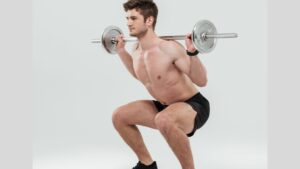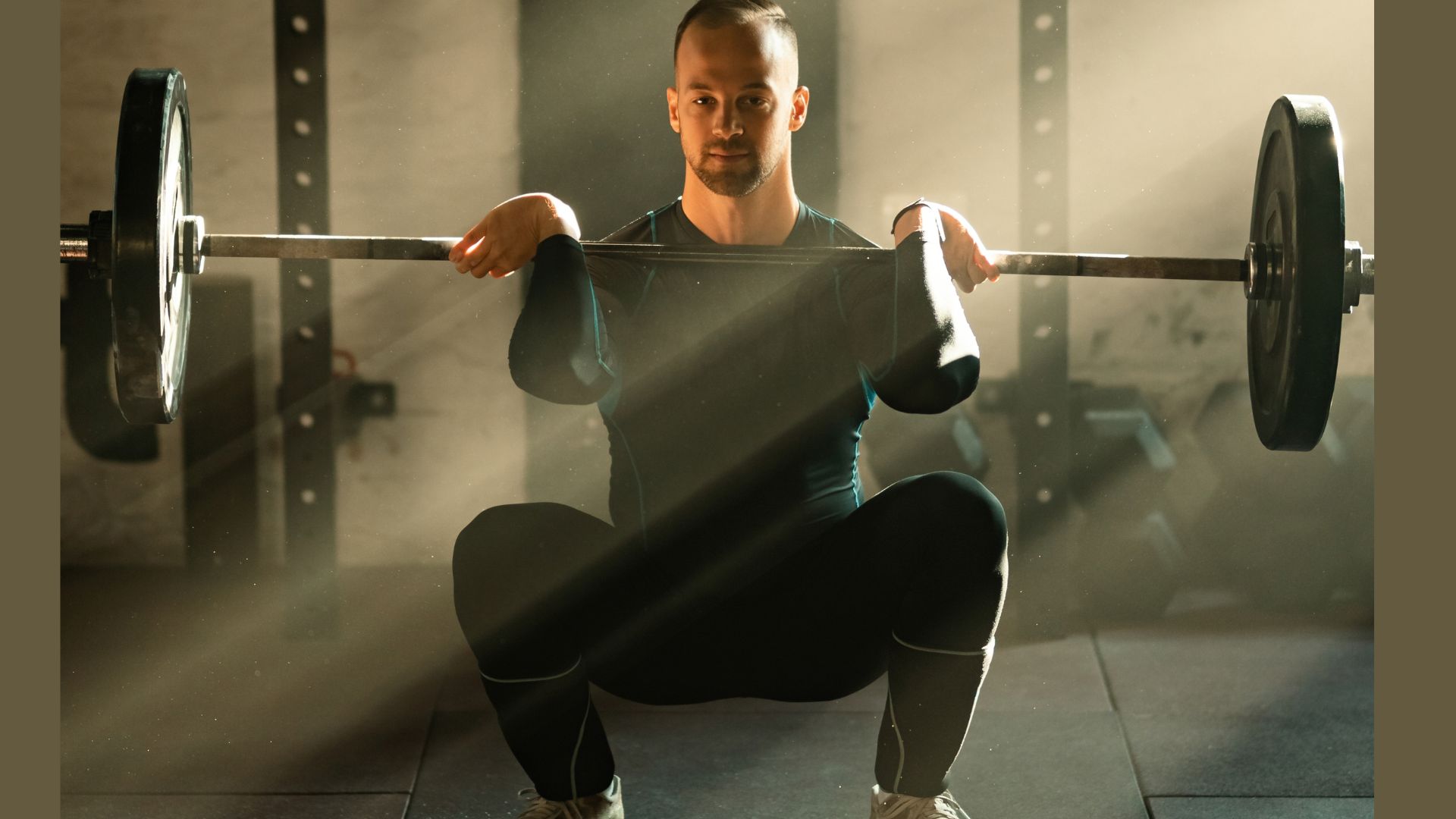Are you a 25-year-old fitness enthusiast wondering about the ideal squatting weight for your age? Look no further!
In this comprehensive guide, we will delve into the subject of squatting and determine the recommended weight range for individuals of your age.
So, if you’re ready to boost your fitness routine and strengthen your lower body, let’s dive in!
The amount of weight you should squat depends on various factors such as your fitness level, experience, and overall strength. It is recommended to start with a weight that challenges you but allows for proper form and technique. Gradually increase the weight over time as you become more comfortable and stronger. Consulting a fitness professional or trainer can provide personalized guidance tailored to your specific needs and goals.
It depends on fitness level and strength.
Determining the appropriate amount of weight to squat is influenced by several factors, including your fitness level, experience, and overall strength.
These factors are important because they dictate the level of resistance your body can safely handle during the squat exercise.
When starting out, it is generally recommended to choose a weight that challenges you but still permits you to maintain proper form and technique.
This is crucial for two main reasons. Firstly, using a weight that is too heavy for your current abilities can compromise your form, leading to an increased risk of injury.
Secondly, by prioritizing proper form, you engage the correct muscles and ensure that you are getting the most out of the exercise.
A good starting point is to perform squats using just your body weight or a light load, such as a barbell with no added weights.
Focus on perfecting your squat technique, including proper alignment of your knees, hips, and spine, and maintaining balance throughout the movement. This foundation allows you to develop the necessary stability and control required for more challenging squats in the future.
As you progress and become more comfortable and stronger, you can gradually increase the weight. This progression can be achieved by adding weights incrementally, such as small plates, to the barbell or using resistance machines that allow for incremental adjustments.
The key is to make incremental increases that are manageable while still providing a challenge. This gradual approach allows your muscles, tendons, and joints to adapt to the increasing demands over time.
It is highly recommended to seek guidance from a fitness professional or trainer. They can assess your current fitness level, evaluate your squat technique, and understand your specific goals.
With this information, they can provide personalized advice tailored to your needs. They may suggest specific weight ranges, rep and set schemes, and modifications based on your individual circumstances.
the ultimate goal is not to compare yourself to others but to focus on your own progress. By starting with a weight that challenges you but maintains proper form, and gradually increasing the weight as you become stronger, you can effectively improve your squatting ability while minimizing the risk of injury.

Here’s a tabular representation of the recommended approach for determining the appropriate weight for squats, along with the reasons behind each recommendation and what to consider:
| Fitness Level | Recommended Weight | Reasons | Considerations |
|---|---|---|---|
| Beginner | Body weight or light load (e.g., barbell with no added weights) | – Allows focus on perfecting technique and form
– Minimizes risk of injury – Builds foundational stability and control |
– Focus on proper alignment of knees, hips, and spine
– Maintain balance throughout the movement – Gradually progress as comfort and strength increase |
| Intermediate | Incremental weight increases (e.g., small plates added to the barbell) | – Builds strength and muscle mass
– Continues to improve technique and form |
– Incrementally increase weight in manageable increments
– Listen to your body for any signs of strain or discomfort |
| Advanced | Progressive overload with heavier weights | – Maximizes strength gains and muscle development
– Challenges the body to adapt to increasing demands |
– Work with a fitness professional or trainer for proper guidance and safety
– Prioritize warm-up and proper form to minimize injury risk – Gradually increase weight while maintaining good technique – Allow for proper rest and recovery between sessions |
Increase weight gradually.
Gradually increasing the weight over time is a fundamental principle in strength training, including squats.
As your body adapts and becomes more comfortable and stronger, progressing with the weight can help you continue challenging your muscles and achieving greater strength gains.
For example, let’s say you start squatting with just your body weight or a light load, such as a barbell without added weights.
As you perform squats consistently, your muscles and neuromuscular coordination improve. You may notice that the initial weight that felt challenging at first now feels easier to handle.
At this point, you can begin adding incremental weight to the exercise. For instance, you could start with 5-pound plates on each side of the barbell.
Gradually, over weeks or months, you can increase the weight by adding additional plates. The progression may involve adding 5 pounds per side every couple of weeks or adjusting the weight based on your individual capabilities.
Consulting a fitness professional or trainer is highly beneficial in this process. They can assess your current fitness level, evaluate your squat technique, and understand your specific goals. Based on their expertise, they can provide personalized guidance tailored to your needs.
For instance, a trainer may recommend specific weight increments and rep ranges based on your strength and progress.
They might suggest starting with a weight that allows you to perform 8-12 reps with proper form, and gradually increasing the weight as you reach the upper end of the rep range. This approach ensures that you are challenging your muscles sufficiently without sacrificing form.
Additionally, a fitness professional can monitor your progress, provide feedback on technique, and make adjustments as necessary.
They can also introduce variations to your squat routine, such as different squat variations (e.g., front squats, goblet squats), tempo variations, or incorporating different equipment like resistance bands or kettlebells.
By working with a professional, you can receive expert guidance, prevent injury, and optimize your squatting progress. They can tailor the program to your specific needs and goals, ensuring that you progress safely and effectively over time.
Here’s a tabular summary of the guidelines for determining the appropriate weight for squatting:
| Guidelines | Explanation |
|---|---|
| Warm up | Perform a dynamic warm-up routine to prepare your body for the workout. This includes mobility exercises and light cardio activities. |
| Start with bodyweight squats | If you’re a beginner or have limited training experience, begin with bodyweight squats to practice the movement pattern and build strength. |
| Gradually increase weight | As you gain confidence and strength, progressively add weight to challenge yourself. Start with a light load and gradually increase over time. |
| Use the RPE scale | Rate of Perceived Exertion (RPE) helps gauge intensity. Aim for an RPE of 6-8 (on a scale of 1-10) to ensure a challenging yet safe workout. |
| Seek guidance if needed | If you’re unsure about technique or would like personalized advice, consult with certified fitness professionals to ensure proper guidance. |
Please note that the table provides a concise summary, and it’s important to refer to the detailed explanations provided earlier for a comprehensive understanding of each guideline.
Conclusion
In conclusion, the appropriate weight for squatting varies depending on individual factors such as fitness level, training experience, and personal goals. Age alone does not determine the ideal weight for squatting. It is essential to prioritize proper form and technique when starting with squats or any strength training exercise.
To determine the appropriate weight for squats, follow these general guidelines: Begin with a dynamic warm-up routine, including mobility exercises and light cardio, to prepare your body for the workout. If you’re a beginner or haven’t been consistent with training, start with bodyweight squats to establish a foundation of strength and become familiar with the movement pattern.
As you gain confidence and strength, gradually increase the weight while maintaining proper form. Start with a light load that challenges you but allows you to perform the exercise correctly.
The Rate of Perceived Exertion (RPE) scale, ranging from 1 to 10, can help guide your intensity. Aim for an RPE of 6-8 for most of your squat sets, ensuring you challenge yourself without compromising form.
If needed, seek guidance from certified professionals who can provide personalized advice and tailor a program to your needs. Remember to listen to your body, progress gradually, and prioritize safety throughout your squatting journey.
By following these guidelines and continuously working on your technique, you can gradually increase the weight you squat and achieve your fitness goals effectively and safely.

Hey there, it’s Mike Rrsq, the Editor-in-Chief over at Jsquat.com, and I’m absolutely obsessed with all things squat fitness! I’ve been lucky enough to get some serious recognition for my work in this field. With a solid background in the fitness and wellness industry, I’ve been there right from the get-go, helping shape this website into what it is today.
You see, I’m not just the boss around here; I’m also a passionate contributor. I love sharing my insights through my articles, and trust me, they’re not your run-of-the-mill stuff. Each piece I write is a labor of love, filled with my expertise and real-world experience in the fitness universe. So, if you’re into fitness and looking for some inspiration, you’re in the right place!

